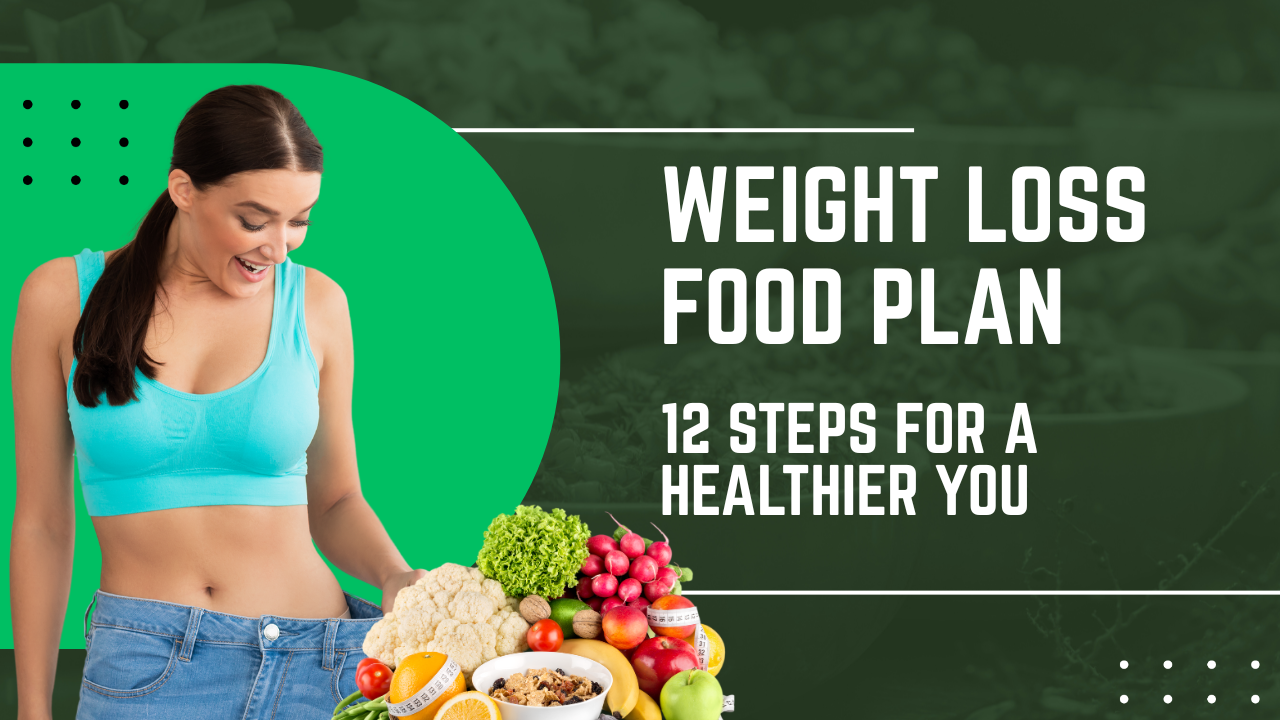Starting a weight loss food plan is one of the most empowering decisions anyone can make when striving for a healthier lifestyle. In a world overflowing with fad diets, quick fixes, and conflicting nutritional advice, finding a structured and sustainable approach becomes essential. A properly designed weight loss food provides clarity, daily guidance, and a sense of direction that removes confusion from your eating habits. Instead of guessing what to eat, how much to eat, or when to eat, a food plan gives you stability. This allows your mind and body to align with your goals in a peaceful, manageable way.
The brilliance of using a well-structured weight loss food plan lies in its ability to create consistent habits. That consistency is what transforms temporary weight loss into permanent change. A plan rooted in nutritious ingredients, balanced portions, and mindful eating helps ensure you always stay on track. Whether your aim is to trim fat, fuel your workouts, manage cravings, or simply feel lighter and healthier, your weight loss food acts as your compass. With every meal chosen intentionally, your body begins responding positively—your metabolism increases, your digestion becomes smoother, and your energy levels rise.
Above all, the right weight loss food plan should empower rather than restrict. It should encourage enjoyment, not punishment. You should never feel deprived or anxious about your food choices. Instead, a great plan helps you discover delicious flavors, nutritious combinations, and satisfying textures that make eating a joyful experience. With the guidance you’ll find in this article, you’ll learn what makes a weight loss food effective, why it matters, and how to build one that works uniquely for your body.
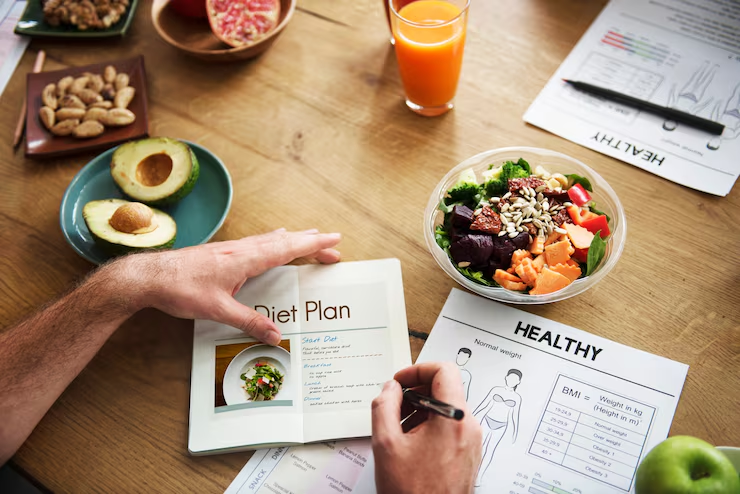
What Is a Weight Loss Food Plan?
A weight loss food plan is a structured eating framework designed to support fat loss while nourishing the body with essential nutrients. Unlike random dieting or restrictive eating patterns, a proper weight loss food is intentional, balanced, and sustainable. It outlines what foods to eat, how much to eat, and when to eat them for optimal results. The goal is not to starve the body, but to feed it wisely. It involves understanding macronutrients—proteins, healthy fats, and carbohydrates—along with micronutrients such as vitamins, minerals, and antioxidants.
A good weight loss food focuses heavily on whole foods: fruits, vegetables, lean proteins, whole grains, seeds, nuts, and healthy fats. These foods supply the nutrients needed for metabolic efficiency, hormonal balance, and muscle maintenance. The plan aims to reduce or eliminate processed foods, refined sugars, and unhealthy fats, which contribute to inflammation and weight gain. By creating consistency in your meals, your weight loss food plan prevents overeating, binge eating, and emotional eating—three common barriers to successful weight loss.
Beyond physical benefits, a weight loss food brings mental organization and emotional stability. It removes confusion about daily food choices and replaces it with structure and confidence. When you know exactly what to eat and why, you avoid impulsive decisions driven by cravings or stress. A well-created weight loss food plan adapts to your lifestyle, preferences, cultural habits, and fitness level. Whether you’re trying to lose a few pounds or undergo a major transformation, your plan becomes the roadmap guiding every step. With proper consistency, a weight loss food plan supports healthy weight management, stronger immunity, better sleep, improved skin, and long-lasting wellness.
Why You Need a Weight Loss Food Plan
One of the biggest reasons people need a weight loss food plan is to create consistency. Without a plan, eating habits become sporadic and unpredictable, leading to overeating or choosing foods high in sugar, empty calories, and unhealthy fats. A structured weight loss food ensures that every meal supports your goals rather than working against them. This structure helps stabilize blood sugar levels, prevent mood swings, and reduce cravings.
Another major reason to adopt a weight loss food is long-term sustainability. Many diets fail because they are extreme or unrealistic, causing people to quit after a few days or weeks. A realistic weight loss food plan avoids deprivation and teaches balanced eating. It encourages flavorful meals using whole ingredients, allowing you to enjoy food while still losing weight. When food becomes enjoyable, not stressful, the chances of sticking to your plan increase significantly.
Finally, a weight loss food plan is essential for overall health, not just weight loss. Proper nutrition supports the immune system, improves sleep quality, enhances brain function, and promotes emotional well-being. Eating nutrient-dense foods reduces inflammation and lowers the risk of chronic diseases such as diabetes, heart disease, and high blood pressure. A consistent weight loss food plan also contributes to glowing skin, healthy hair, improved digestion, and increased energy.
Essential Components of an Effective Weight Loss Food Plan
High-Protein Foods
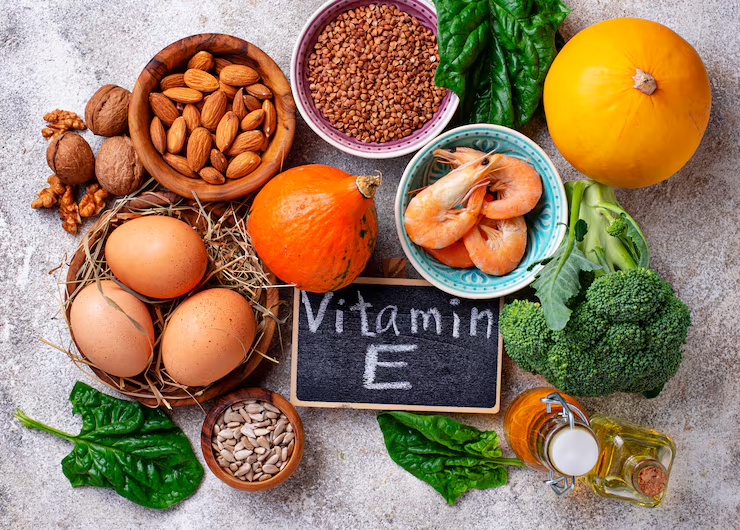
Protein is a powerful foundation of any successful weight loss food , as it plays a crucial role in metabolism, digestion, and muscle preservation. When you consume protein-rich foods such as lean meat, fish, eggs, beans, tofu, or Greek yogurt, your body burns more calories during digestion. This thermogenic effect allows your weight loss food plan to work more efficiently. Protein also helps you feel full for longer, reducing the likelihood of overeating throughout the day. With higher satiety, you naturally avoid unnecessary snacking, especially sugary or processed foods that hinder weight loss progress.
Beyond controlling hunger, protein supports the maintenance of lean muscle mass. During weight loss, your body may break down muscle for energy, but a well-balanced weight loss food plan prevents this. Muscle is metabolically active, meaning the more muscle you preserve, the more calories you burn even at rest. This accelerates fat loss while maintaining strength and tone. Protein also regulates essential hormones, helping reduce cravings and stabilize mood swings often associated with dieting.
Additionally, protein supports cognitive performance, immune function, and overall health. Its amino acids are essential for repairing tissue, promoting a healthy metabolism, and maintaining glowing skin, strong nails, and vibrant hair. A diet rich in protein keeps your body functioning at its peak, making your weight loss food plan more effective. With a variety of protein sources available — plant-based and animal-based — it’s easy to customize your meals to align with personal tastes and nutritional needs.
How to Make It:
Add grilled chicken, tofu, beans, yogurt, or eggs to salads, bowls, wraps, and soups.
Nutritional Benefits:
Supports muscle growth, increases satiety, boosts metabolism, and stabilizes hunger hormones.
High-Fiber Foods
Fiber-rich foods are essential in a weight loss food plan because they promote fullness, support digestion, and help regulate blood sugar. Foods such as oats, vegetables, fruits, lentils, and chia seeds slow the digestive process, allowing you to feel satisfied longer after meals. This reduces cravings and prevents overeating, making fiber a powerful tool in maintaining a calorie deficit. High-fiber foods also add volume to meals without increasing calories, making your weight loss food plan more satisfying and enjoyable.
Fiber also improves gut health, which is crucial for weight management. A healthy gut microbiome supports metabolism, nutrient absorption, and immune function. When your digestive system functions properly, your body burns calories more efficiently. A weight loss food plan rich in fiber helps reduce bloating and supports regular bowel movement, making you feel lighter and more energetic. Additionally, fiber helps regulate blood sugar by slowing glucose absorption, preventing spikes and crashes that trigger cravings.
High-fiber foods also provide long-term health benefits, including improved heart health, reduced cholesterol, and protection against certain diseases. By incorporating a wide range of fiber-rich foods into your weight loss food plan, you improve your overall wellness while working toward your weight goals. These foods are versatile and easy to incorporate into daily meals, making them an essential component of a sustainable plan.
How to Make It:
Use oats, chopped vegetables, beans, or fruits in breakfast bowls, salads, or soups.
Nutritional Benefits:
Improves digestion, regulates blood sugar, increases fullness, and enhances gut health.
Healthy Fats
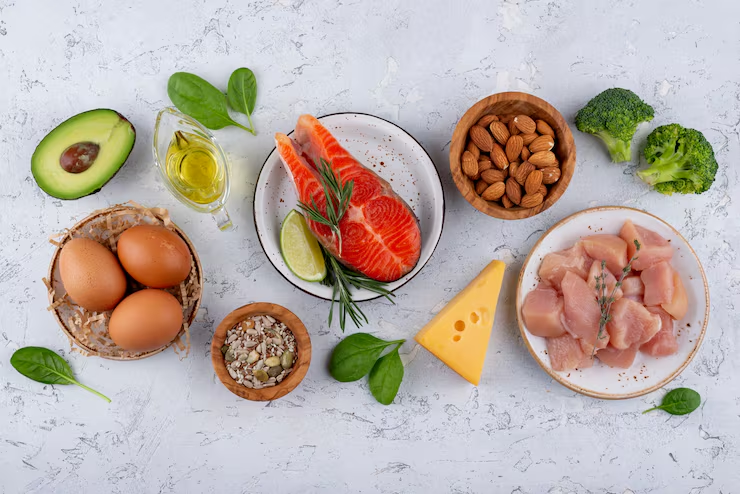
Healthy fats are a misunderstood but essential part of a weight loss food plan. While unhealthy fats from processed foods contribute to weight gain, healthy fats from nuts, seeds, avocados, olive oil, and fatty fish actually support fat loss. These fats help regulate hormones, improve brain function, and increase meal satisfaction. When you include healthy fats in your meals, you feel fuller, reducing the urge to snack excessively. This enhances consistency in your weight loss food plan, making it easier to maintain a calorie deficit without feeling deprived.
Furthermore, healthy fats support nutrient absorption. Vitamins A, D, E, and K are fat-soluble, meaning they require fat to be absorbed effectively. Including healthy fats ensures your body receives maximum benefits from your meals. A balanced weight loss food plan that incorporates these fats also supports skin health, joint function, and cardiovascular wellness. Healthy fats can stabilize your mood, help manage stress, and support cognitive performance — all essential factors when committing to long-term weight loss.
Healthy fats also regulate hunger hormones such as leptin, which helps signal to the brain when you are full. By promoting hormonal balance, a weight loss food plan rich in healthy fats helps prevent overeating and emotional eating. These fats provide slow-burning energy, which keeps you feeling stable and focused throughout the day. They are an irreplaceable part of a sustainable food plan, helping you enjoy meals without guilt or restriction.
How to Make It:
Add avocado slices to your meals, include olive oil in salads, or sprinkle nuts and seeds over dishes.
Nutritional Benefits:
Improves hormone balance, increases fullness, supports heart health, and enhances nutrient absorption.
Hydrating Foods & Proper Hydration
Hydration is a critical part of any weight loss food plan, as water influences digestion, metabolism, and appetite control. Many people confuse thirst with hunger, leading to unnecessary eating. Staying hydrated ensures your body can differentiate between the two. Foods rich in water — such as cucumbers, watermelon, celery, tomatoes, and oranges — help keep you hydrated while adding volume to your meals. Including these foods makes your weight loss food plan more refreshing, filling, and effective.
Water supports every metabolic process in the body, including fat oxidation. When you follow a weight loss food plan, your body requires adequate hydration to burn stored fat, digest protein efficiently, and maintain electrolyte balance. Proper hydration reduces bloating, improves digestion, and stabilizes energy. Drinking water before meals can also reduce calorie intake by increasing fullness, helping your weight loss food plan stay on track with minimal effort. When combined with hydrating foods, water becomes one of your strongest allies in weight management.
Hydration also affects mood, cognitive function, and physical performance. Dehydration can cause fatigue, headaches, and irritability, making it difficult to stick to your weight loss food plan. Proper hydration enhances concentration, supports detoxification, and helps maintain healthy skin. Since water contains zero calories, it is the perfect addition to any meal plan aimed at weight loss. Drinking herbal teas, infused water, or plain water throughout the day creates a significant impact on your results.
How to Make It:
Include water-rich foods in snacks and meals and drink 6–8 glasses of water daily.
Nutritional Benefits:
Improves digestion, boosts fat metabolism, reduces cravings, and enhances hydration.
Whole Grains

Whole grains are a vital component of a balanced weight loss food plan, offering fiber, nutrients, and long-lasting energy. Unlike refined grains that spike blood sugar and increase cravings, whole grains digest slowly, keeping you full and energized. Foods like quinoa, brown rice, oats, barley, and whole wheat provide essential vitamins and minerals. These grains stabilize blood sugar, reduce hunger, and promote consistency in your weight loss food plan. The fiber in whole grains supports digestion, regulates appetite, and helps maintain steady energy.
Whole grains also reduce the risk of obesity, heart disease, and diabetes. Their high fiber content helps reduce cholesterol and improves gut health. By promoting slower digestion, they prevent overeating and prolong fullness. A weight loss food plan rich in whole grains helps you maintain a low-calorie intake without feeling deprived. Their versatility allows them to be used in a variety of dishes, such as salads, soups, bowls, and stir-fries.
Additionally, whole grains support mental clarity and emotional stability. Their slow-release carbohydrates provide steady fuel for the brain. When included in your weight loss food plan, they help regulate mood and reduce stress-induced cravings. These grains complement proteins and veggies perfectly, creating balanced meals that support weight loss and long-term health.
How to Make It:
Use quinoa or brown rice in bowls, add oats to breakfast meals, or choose whole-wheat bread.
Nutritional Benefits:
Improves digestion, boosts energy, stabilizes blood sugar, and supports heart health.
Fruits & Vegetables
Fruits and vegetables are essential in a weight loss food plan because they provide nutrients, antioxidants, fiber, and hydration while remaining low in calories. These foods add color, flavor, and variety to your meals. Vegetables such as spinach, broccoli, tomatoes, carrots, and peppers provide essential vitamins and fiber that support digestion and fullness. Fruits like apples, berries, and oranges add natural sweetness to your weight loss food plan, making it enjoyable without relying on processed sugar.
These nutrient-rich foods also support detoxification. Their antioxidants protect cells from damage, reduce inflammation, and improve immunity. This helps your metabolism work efficiently, which is essential when following a weight loss food plan. The high water content in fruits and vegetables keeps you hydrated and feeling full, reducing the urge to snack unnecessarily. Their fiber content also stabilizes blood sugar and reduces cravings.
Fruits and vegetables contribute to glowing skin, stronger immunity, and overall vitality. Their low-calorie nature makes it easy to fill your plate without consuming excess calories. This supports a sustainable weight loss food plan that does not feel restrictive. With so many options available, you can create endless combinations to keep your meals exciting and nutrient-dense.
How to Make It:
Add fruits to smoothies or breakfast bowls and use vegetables in salads, soups, wraps, and stir-fries.
Nutritional Benefits:
High in vitamins, antioxidants, hydration, and fiber; supports immunity and digestion.
Smart Snacking Strategies

Snacking is a major factor in weight management, and including smart snacks in your weight loss food plan can make a huge difference. Instead of choosing unhealthy snacks high in sugar and fat, opt for nutritious options like nuts, yogurt, fruit, veggies with hummus, or boiled eggs. Smart snacks keep your energy stable and prevent overeating during main meals. Including planned snacks ensures that your weight loss food plan remains satisfying and sustainable.
Snacking also supports metabolism by providing fuel throughout the day. When done mindfully, it prevents the “starvation mode” effect, where your body slows its metabolism in response to long periods without food. A well-timed snack stabilizes blood sugar and reduces cravings. This allows your weight loss food plan to work efficiently without causing irritability or fatigue. Smart snacking also helps avoid emotional eating, which is common when hunger intensifies.
Additionally, snacking allows you to include more nutrient-dense foods in your diet. You can increase your intake of protein, fiber, antioxidants, and healthy fats through well-chosen snacks. This enhances your weight loss food plan and boosts overall health. By making snacks intentional instead of impulsive, you maintain control over your calorie intake.
How to Make It:
Prepare snacks in advance using nuts, fruits, yogurt, or veggie sticks.
Nutritional Benefits:
Boosts energy, stabilizes blood sugar, reduces cravings, and improves mood.
Meal Timing & Portion Control
Meal timing plays a significant role in the effectiveness of a weight loss food plan. Eating at consistent times helps stabilize metabolism, regulate hunger hormones, and improve digestion. Breakfast jumpstarts metabolism, while evenly spaced meals maintain steady energy. This prevents the overeating that often happens when meals are skipped. A structured weight loss food plan with proper timing helps your body burn fat more efficiently and avoids fat storage caused by irregular eating patterns.
Portion control is equally important. Even healthy foods can contribute to weight gain when eaten in excess. Using smaller plates, measuring portions, and eating mindfully prevents overeating and helps maintain a calorie deficit. Portion control teaches you how much food your body truly needs. A weight loss food plan that includes balanced portions of proteins, healthy fats, and carbs supports metabolic health and prevents digestive discomfort. Eating slowly also enhances fullness and satisfaction.
Together, portion control and meal timing create a powerful foundation for weight loss. They improve energy distribution, support mental focus, and reduce cravings. When included in your weight loss food plan, these strategies make the process smoother and more effective. Over time, your body adapts to a predictable eating routine that supports long-term success.
How to Make It:
Eat meals every 3–4 hours and divide your plate into balanced portions.
Nutritional Benefits:
Improves digestion, stabilizes hunger hormones, enhances fat metabolism, and reduces overeating.
Conclusion
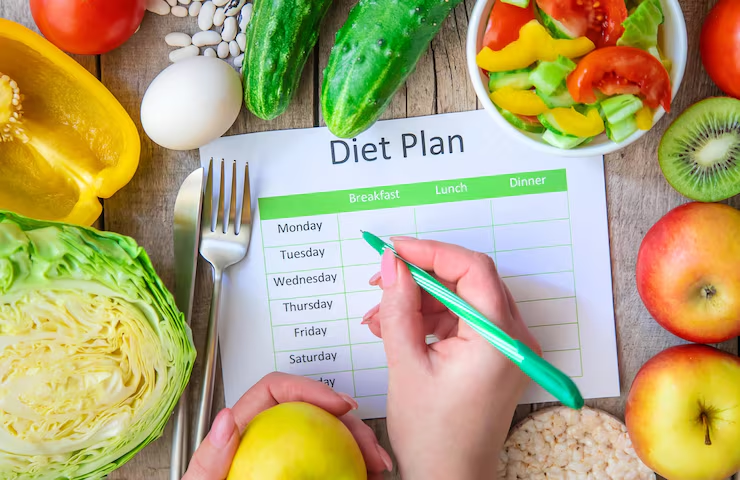
A successful weight loss food plan is more than a temporary diet; it is a long-term pathway to healthier living. By emphasizing whole foods, balanced nutrients, consistent meal timing, and mindful eating, it helps create sustainable habits that lead to lasting transformation. A great plan works with your body, not against it. It helps you stay energized, satisfied, and motivated as you work toward your goals. With structured guidance and intentional choices, your weight loss food plan becomes a powerful ally in managing weight and enhancing overall wellness.
The beauty of a weight loss food plan lies in its flexibility. It adapts to personal preferences, cultural habits, and dietary needs. It teaches you how to nourish your body with foods that fuel energy, support digestion, stabilize hormones, and reduce cravings. As you incorporate the principles explored in this article—high protein, fiber-rich foods, healthy fats, hydration, whole grains, fruits, vegetables, smart snacking, and proper meal timing—you discover how much your body thrives with balanced nutrition.
Ultimately, a weight loss food plan brings physical, mental, and emotional benefits that extend far beyond the scale. You experience increased confidence, clearer thinking, better mood, and improved overall health. With patience and dedication, your food plan becomes a lifestyle that supports longevity and well-being. Remember that progress comes from consistency, not perfection. Every healthy choice you make brings you one step closer to the vibrant, empowered version of yourself.
FAQs
Q1. How does a weight loss food plan help with long-term weight management?
A weight loss food plan helps long-term management by creating consistent eating habits that stabilize blood sugar, control cravings, and promote portion awareness. When you follow a structured plan, your body adapts to balanced meals, making it easier to maintain weight over time. It eliminates random eating patterns and provides a solid foundation for sustainable health.
Q2. How many times a day should I eat in a weight loss food plan?
Most people succeed with 3 main meals and 1–2 small snacks. A weight loss food plan works best when meals are spaced evenly to prevent hunger spikes and overeating. Consistent eating supports metabolism, maintains energy levels, and keeps hunger hormones balanced, helping you achieve better long-term results.
Q3. Can I enjoy my favorite foods while following a weight loss food plan?
Yes! A successful weight loss food plan allows moderation. Instead of eliminating favorites, you balance them with nutrient-dense meals. Occasional treats prevent feelings of deprivation and help you stay consistent. The key is portion control and mindful eating, so you enjoy foods without jeopardizing progress.
Q4. How fast can I see results from a weight loss food plan?
Most people notice changes in 2–4 weeks. A weight loss food plan improves metabolism, reduces bloating, and increases energy quickly. However, long-term fat loss depends on consistency, activity level, and individual metabolism. Sustainable results come from steady progress rather than extreme dieting.
Q5. Are weight loss food plans suitable for all ages?
Yes, a weight loss food plan can be adapted for teens, adults, and older individuals. The focus is always on balanced nutrition, whole foods, and proper portions. It’s important to adjust calorie needs and activity levels depending on age, but the core principles remain effective and safe for most people.
